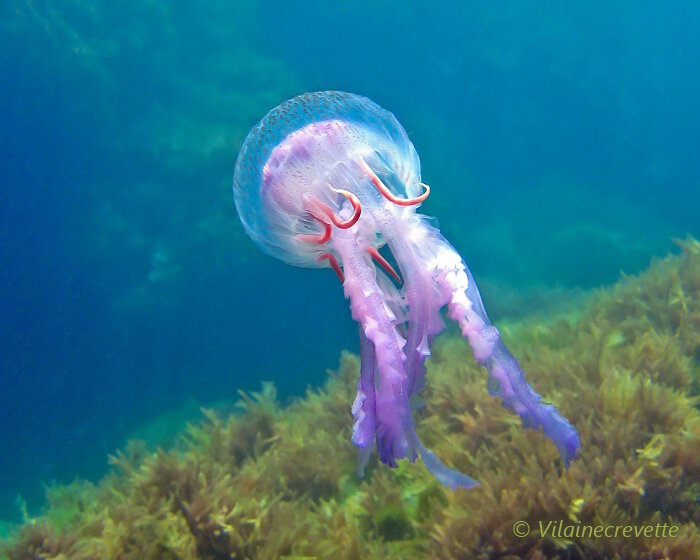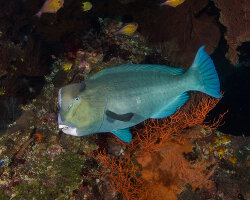Sealife guideThe purple striped jellyPelagia noctiluca
Last updated on 08/20/2024 at 08:58 PM
Taxonomy
- Common name: Purple striped jelly, mauve stinger
- French name: Méduse pélagique, méduse mauve, pélagie
- Spanish name: Acalefo luminiscente
- Scientific name: Pelagia noctiluca (Forsskål, 1775)
- Family name: Pelagiidae
- Order name: Semaeostomeae
- Class name: The scyphozoans [Scyphozoa]
Description
The purple striped jellyfish has a mushroom-shaped body with its bell and oral arms. Both the bell and the oral arms are transparent, with a slightly pinkish, purple or violet color, and are covered in numerous small darker-colored warts.
The bell is generally small, with an average diameter ranging from 2 to 6 inches.
The purple striped jellyfish features 4 oral arms and 8 long, slender stinging tentacles that can easily reach up to 16 inches.
Geographic range
The purple striped jellyfish is found in temperate and tropical waters around the world. It is especially common in the Mediterranean Sea and is notably observed along the coastlines during summer when environmental conditions favor its proliferation.
Habitat
Like all jellyfish and as its french name suggests, the purple striped jellyfish is a pelagic species that drifts with the currents.
When environmental conditions are favorable, it can form large aggregations, known as blooms, which can affect fishing activities and disrupt swimming near the shore.
Diet
The purple striped jellyfish feeds on plankton, small
crustaceans, larvae, and other marine organisms that it captures with its long stinging tentacles.
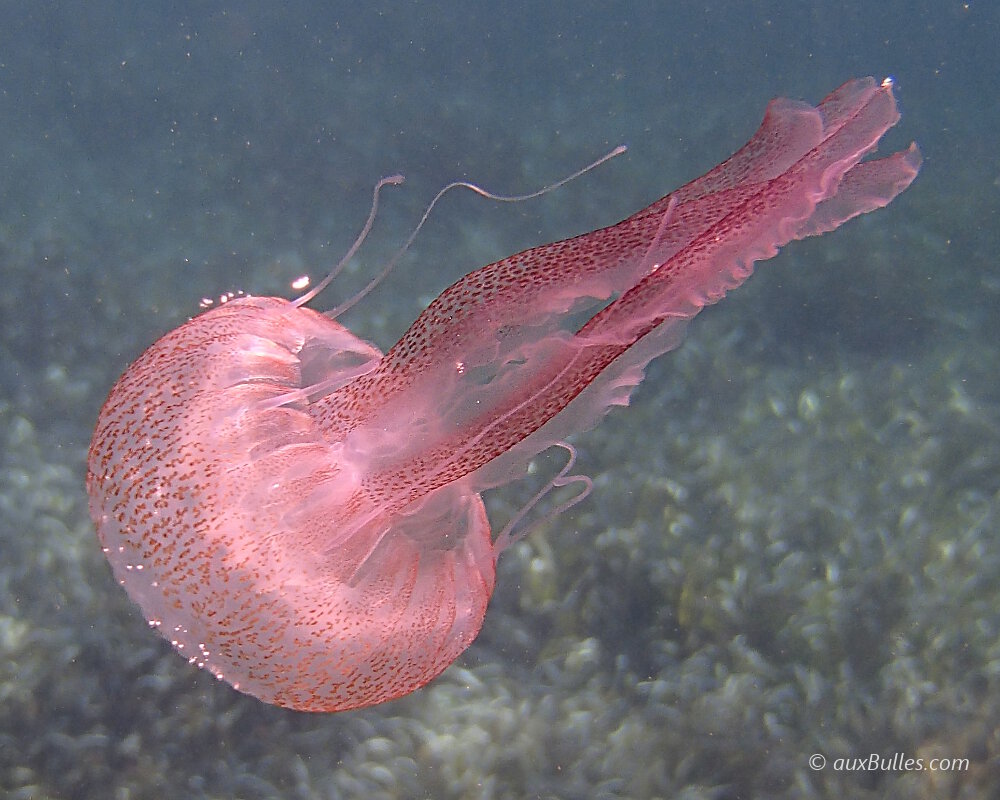
The body of the purple striped jellyfish with its bell and four distinct oral arms
Reproduction
Like all jellyfish, the purple striped jellyfish has a complex life cycle that includes several stages, including a larval stage and an adult stage.
It reproduces sexually, with internal fertilization of the female's eggs by sperm released into the sea by the male. The eggs are then released by the female through the jellyfish's mouth and develop into larvae before maturing into adult jellyfish.
Did you know ?
The purple striped jellyfish is highly stinging. Contact with the skin can cause painful stings that result in a burning sensation, skin irritation and allergic reactions in some individuals.
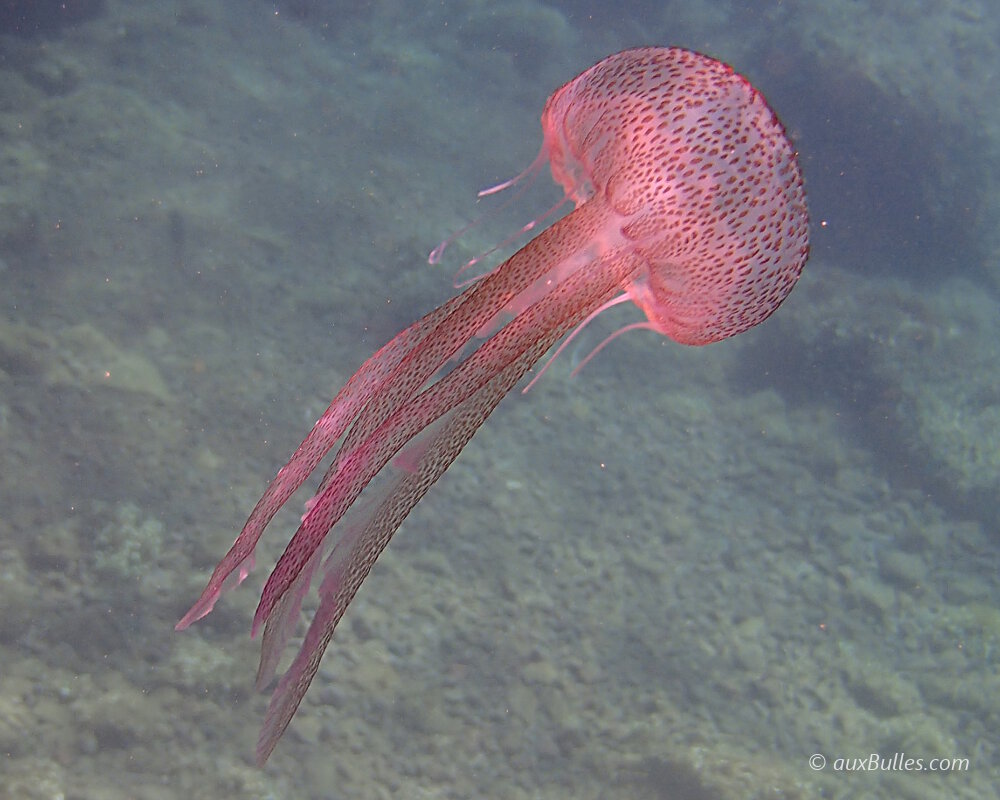
The stinging tentacles of the purple striped jellyfish are particularly thin and number eight, lining the bell
The jellyfish is capable of producing light, a phenomenon known as bioluminescence, when disturbed, creating a beautiful light display in the water especially at night.
Within the same family
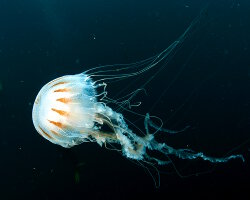
Atlantic sea nettle
(Chrysaora quinquecirrha)
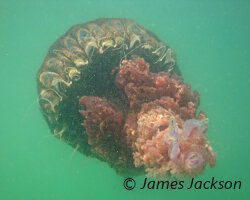
Black sea nettle
(Chrysaora achlyos)
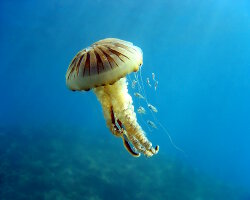
Compass jellyfish
(Chrysaora hysoscella)
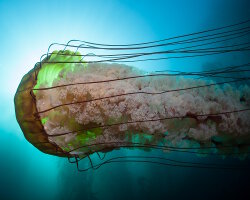
Sea nettle
(Chrysaora fuscescens)
Discover also
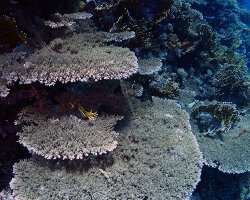
Acropora cythereacoral
(Acropora cytherea)
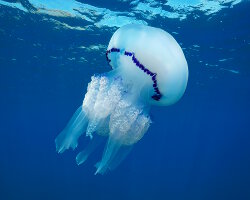
Barrel jellyfish
(Rhizostoma pulmo)
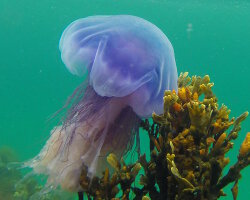
Blue jellyfish
(Cyanea lamarckii)
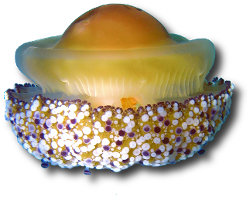
Fried egg jellyfish
(Cotylorhiza tuberculata)
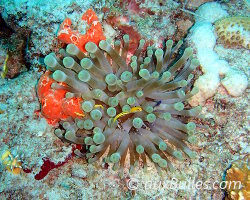
Giant caribbean anemone
(Condylactis gigantea)
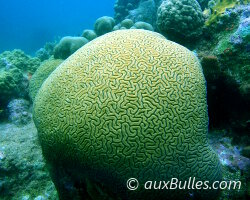
Labyrinthine brain coral
(Diploria labyrinthiformis)
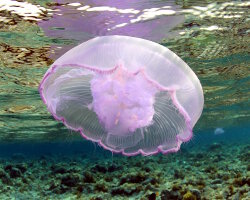
Moon jellyfish
(Aurelia aurita)
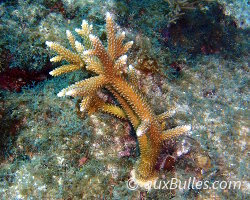
Staghorn coral
(Acropora cervicornis)
The marine species from Mediterranean sea
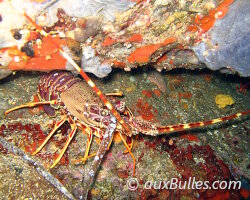
European spiny lobster
(Palinurus elephas)
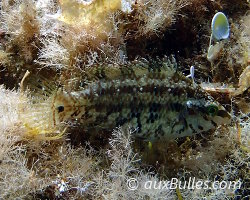
Five-spotted wrasse
(Symphodus roissali)

Green sea turtle
(Chelonia mydas)

John dory
(Zeus faber)
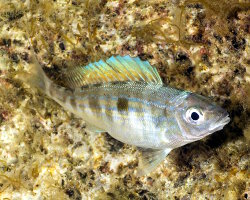
Picarel
(Spicara smaris)
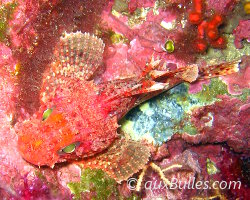
Small red scorpionfish
(Scorpaena notata)
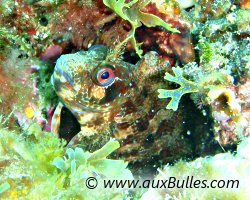
Tompot blenny
(Parablennius gattorugine)
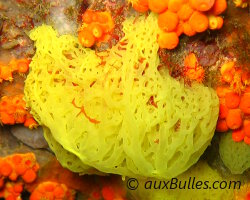
Yellow sponge Clathrina
(Clathrina clathrus)









